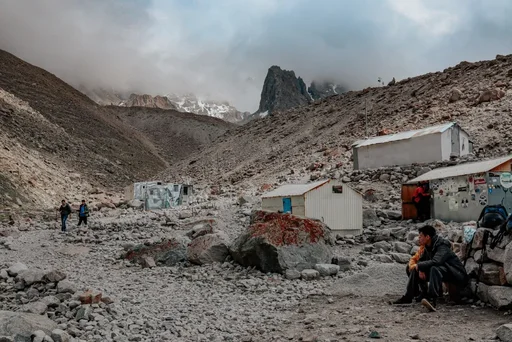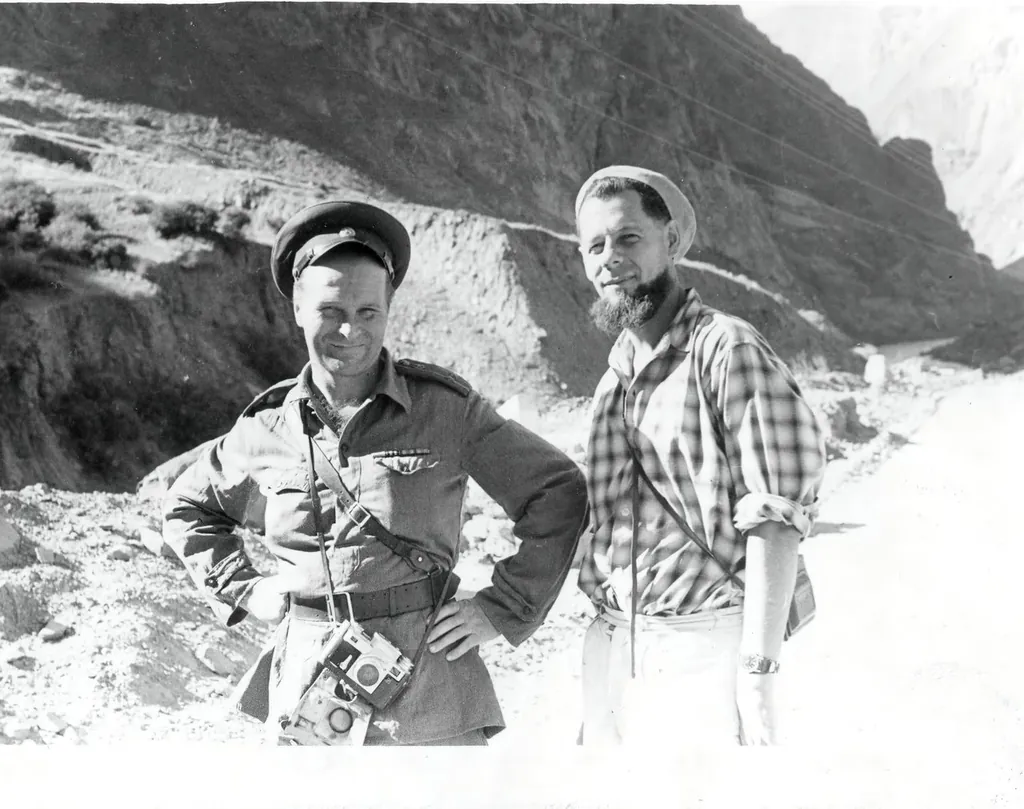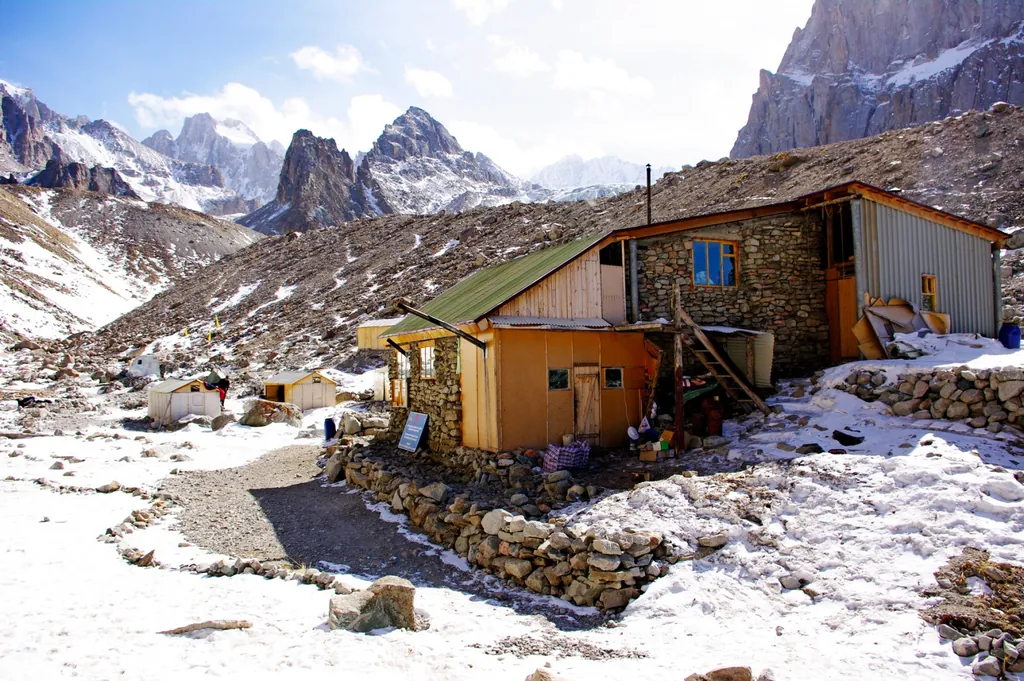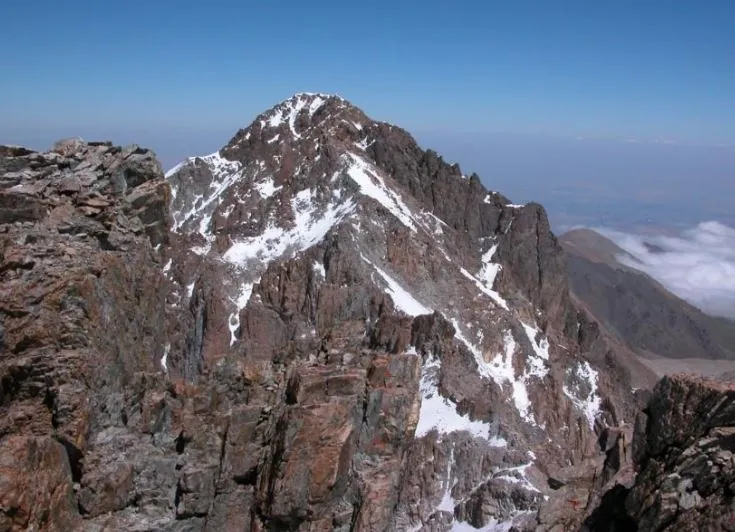Visit two pearls of Kyrgyzstan in 1 day on a car tour
- Duration: 1 days.
- Price: from 300$ 250$ for group
- Group size: Small group tour

The Ratzek Hut is an iconic place for mountaineers in the Kyrgyz Range (Northern Tian Shan). Officially, the shelter is called “Ak-Sai” after the glacier, but the campsite located here has long borne the name of Vladimir Ratzek-one of the pioneers of Kyrgyz mountaineering. In the 1930s, Ratzek organized military–mountaineering training camps in the Ak-Sai Gorge, and since then the high mountain bivouac in Ala-Archa has become popularly known as the “Ratzek Hut.” Vladimir Iosifovich Ratzek himself (1918–1980) became head of the Kyrgyz Alpine Club in 1938 and made a huge contribution to the exploration and conquest of the peaks of the Tian Shan. In particular, he took part in an expedition that refined the elevation of Peak Pobeda and was awarded the Semenov-Tian-Shansky Gold Medal in 1946. Peaks in Ala-Archa (about 4,100 m) and in the Pamirs, as well as the base camp under Ak-Sai, were named in his memory. Initially, there was a small canvas tent at the campsite, and a permanent shelter was built by community effort in 1969. By 2008, the hut was completely rebuilt and expanded: it is now a solid structure capable of accommodating up to 40 people (several sleeping rooms, a kitchen, and even a banya). The hut is owned by the Kyrgyz Republican Alpine Club and Mountain Huts LLC, which maintain its operations.
Teacher Peak (4,530 m) is one of the most accessible summits for beginner mountaineers in the vicinity of Bishkek. Its name “Teacher” is no coincidence. According to seasoned guides, this peak serves as a kind of training ground: it is here that novices learn the basics of climbing, and the mountain itself seems to “teach” climbers to overcome their first heights. Back in Soviet times (in 1938), a group led by V. Ozerovsky made the first ascent of Teacher via the classic West Ridge (grade 1B). Since then, almost all famous mountaineers of the USSR and Kyrgyzstan have trodden the paths of Teacher-this peak was long part of the training program in local alpine camps. Thanks to this, today it is called an “open-air museum of alpinism”: every stone on the route holds the memory of legendary climbers. The elevation of 4,530 m makes Teacher one of the highest training peaks of this difficulty (1B), and its relative technical simplicity attracts mountain lovers from all over the world.


General outline: Most routes to Teacher Peak involve a two-day ascent with an overnight stay at the Ratzek Hut. The starting point is Ala-Archa, a high-mountain national park just ~40 km from Bishkek. You can reach the park entrance by car (≈1–1.5 hours’ drive from the city). Inside the park is the “Ala-Archa” alpine camp (around 2,200 m)-there is a campsite and a simple guesthouse with a café where you can get a meal and register. From the alpine camp, a hiking trail leads up the Ak-Sai Gorge to the Ratzek Hut.
Day 1: Approach to the Ratzek Hut (3,300+ m). The trail starts along the Ala-Archa River through spruce forest and alpine meadows. After about 2–3 hours of ascent, you will emerge from the forest zone at the “Tapsha” viewpoint, which offers the first panoramas of the Ak-Sai and Ala-Archa ridges. You can see the peaks Komsomolets, Korona (Crown), Teacher, and other summits of the Kyrgyz Range. The route then passes a beautiful waterfall, after which the glacier’s moraine begins. The trail is rocky in places but well trodden. In the final section, you will have to overcome three steep scree rises along the moraine-be prepared for loose ground and elevation gain. In total, from the alpine camp to the hut is ~6–7 km with a gain of ~1,100–1,200 m, taking from 3 to 6 hours of hiking depending on pace. The Ratzek Hut is located on the lateral moraine of the Ak-Sai Glacier (around 3,360 m) and is surrounded by an impressive amphitheater of mountains. Experienced groups usually pitch tents here, but you can also stay in the hut itself (by prior arrangement with the alpine club). It’s best to end the first day with an early dinner and rest. A night at 3,300 m will not only give you strength but also serve as acclimatization before the summit push.
Day 2: Ascent of Teacher Peak (4,530 m). The day begins before dawn-groups set out around 5–6 a.m. From the hut, the trail leads up a scree gully on the left side of the gorge (the West Ridge of Teacher). First you climb grassy slopes and scree, then over large boulders and easy rock steps without technical climbing. Snow patches or firn are possible-depending on the season there may be snowy sections on the trail, especially closer to the summit. The route does not require special technical gear; the difficulty is physical: the steepness of the scree, thin air, and possible morning cold are the main challenges for climbers. Average ascent time to Teacher Peak is 4–7 hours; beginners usually reach the summit closer to noon. At the top, a well-earned reward awaits: a breathtaking panorama of two worlds at once. To the south and east lies the formidable Ak-Sai landscape-peaks Korona, Svobodnaya Koreya (Free Korea), Teke-Tor, Box, and other sharp towers, with the glacier-clad Semenov-Tian-Shansky Peak (4,875 m) rising beyond. In the opposite direction, to the north, the green Chuy Valley is visible and even distant Bishkek in clear weather. After taking memorable photos and resting, the group descends the same way. The descent takes 3–4 hours but requires no less caution: scree is very slippery on the way down, and fatigue makes itself felt. You usually return to the Ratzek Hut in the afternoon. From here, depending on how you feel, there are two options: either rest and stay a second night in the hut, or pack up and descend to the alpine camp the same day (another ~3–4 hours). Many prefer the second option, returning to civilization by the evening of day two. In any case, don’t forget that you need the strength and time for the way back. Plan with a time buffer so you don’t descend in the dark.


Climbing season. The optimal time for the ascent is summer and early autumn (late June–September). During this period, the trail is usually free of deep snow, the weather is more stable, and daytime temperatures are comfortable. From October, snowfalls and frost begin in the mountains of Ala-Archa. Beginners are not advised to attempt Teacher in winter-cold, short daylight, and avalanche danger make the route much more difficult. If you really want to see Ala-Archa in snow, it’s better to join experienced instructors as part of organized camps or tours.
Acclimatization and health. A rapid gain in altitude (from 2,100 m to 4,530 m in two days) is a serious load on the body. Try to spend at least a day around 3,000+ m before the ascent. For example, take a walk around the Ratzek Hut on the day of arrival, going up neighboring moraines or nearby minor summits-this will improve sleep and well-being at this altitude. Listen to your body: headache, nausea, severe shortness of breath are signs of possible altitude sickness. Take timely breaks, drink enough water, and don’t hesitate to turn back if your condition suddenly worsens. The peak isn’t going anywhere-safety comes first.
Essential equipment. Despite the route’s relative simplicity, you should go to high mountains fully equipped. Mandatory: sturdy trekking boots with a grippy sole; a warm membrane jacket and pants (in the upper section it’s often windy and can be below 0°C even in summer); a fleece or down layer for breaks; hat and gloves. Snow and sun are very intense in the mountains-bring quality sunglasses and sunscreen. Trekking poles are useful (they ease the climb and reduce knee load on descent) and a headlamp (in case of an early start or delay). For overnighting in the hut, you’ll need at least a light sleeping bag (spaces in the shared room are booked in advance). You’ll also need a ~60 L backpack to carry all gear and provisions. Rope, crampons, and ice axe are not required on the classic summer route, but if you’re going in early spring or are unsure-consult instructors. The main thing is not to overload your pack with unnecessary items, but don’t skimp on warm clothing and footwear.
Logistics and lodging. The overnight question is simple: most groups sleep either in the Ratzek Hut or in tents nearby. The hut accommodates about 30–40 people; bunks in the shared room can be booked through the Kyrgyz Alpine Club (as the managing organization). Comfort is minimal (bunk beds, a stove for heating and cooking, no electricity except a solar panel). But there’s a roof over your head and the chance to meet like-minded people from all over the world-the Ratzek campsite traditionally gathers international alpine companies. Have some cash in Kyrgyz soms on hand: a small fee may be charged for lodging and use of a gas stove or firewood if such options are provided. Down at the base (alpine camp) there is also a guesthouse and campsite-you can stay there before or after the ascent to regain strength. Food is carried with you. You can cook on a gas burner (there’s usually a kitchen in the hut) or on a stove/fire. Water is taken from streams and meltwater near the hut, so purification tablets or a filter won’t hurt.
Communication and safety. Note that there is no mobile coverage either at the Ratzek campsite or on the route itself. In the area of the alpine camp (below) you still have signal and there’s Wi-Fi in the café, but once you climb higher you will be off-grid. Experienced groups use radios on Ala-Archa routes. Therefore, be sure to warn your loved ones about your plans and estimated return times. In an emergency, the most reliable option is to descend to the hut or lower-on certain sections of the trail, signal may appear if the valley is in view. Also don’t forget to register at the national park checkpoint or with the rescue service if you plan an independent ascent. There is a memorial to fallen mountaineers at the Ala-Archa alpine camp-a reminder that the mountains demand a serious attitude. Be cautious: wear a helmet if you pass under scree slopes; check the weather forecast; set off before dawn to be back in daylight. If you follow these measures, Teacher Peak will be a magnificent first experience in the world of big mountains-have a great climb!
Visit two pearls of Kyrgyzstan in 1 day on a car tour
Forgotten Rivers and Mountain Peaks: A Journey Along the Southern Shore of Issyk-Kul is a three-day tour that immerses you in the unique natural beauty of Kyrgyzstan.
Experience all the beauty of Kyrgyzstan's nature behind the wheel of a comfortable and daring BMW F650GS tour enduro. These impressions are worth any money and will never be forgotten.
This route combines the picturesque mountain canyons of Kok-Moinok, Lake Issyk-Kul, the taste of national cuisine and a trip along one of the most beautiful roads in the country – the Boom Gorge.
Visit the Valley of the Seven Bulls, see Issyk-Kul and relax in the thermal springs
Skiing, mountains, and the winter atmosphere of Kyrgyzstan. A one-day ski trip to Orlovka – skiing near Bishkek
In 3 days we will travel around Lake Issyk-Kul. We will spend two days in the city of Karakol, devoting them to skiing at the ski resort. And we will also relax in the thermal springs!